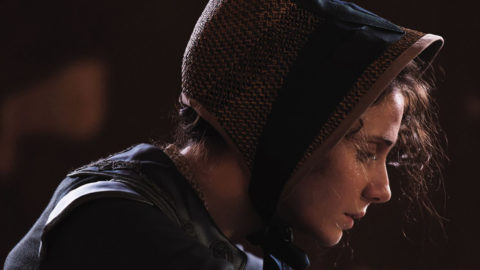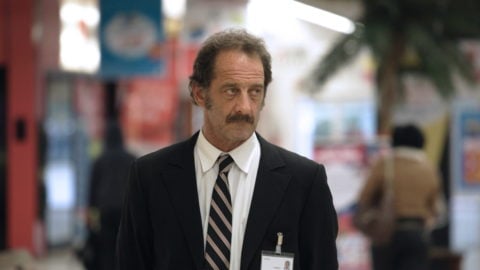Film of the Week: A Woman's Life
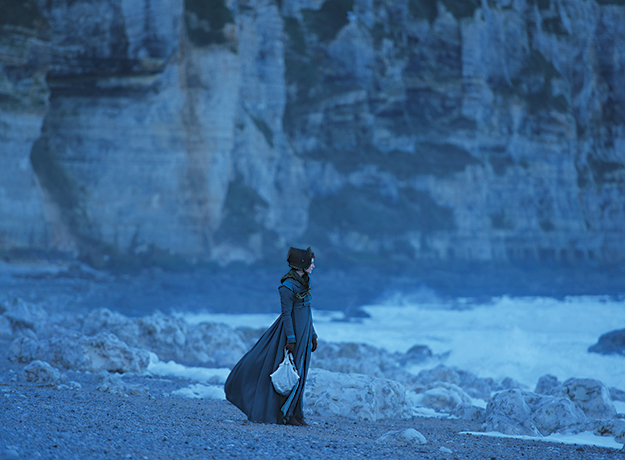
Just because a film is set in the past doesn’t mean that it also has to take place in the past tense. Of course, in a sense, all film narratives are in the past tense: even though movies tend to maximize the immediacy of what’s happening on screen, we’re always at least partly aware of seeing events that have already happened in front of a lens and been edited into a simulated present for our benefit. But in its cleaving to traditional narrative norms, most cinema fiction preserves, at least subliminally, the past historic tense of literary storytelling: this happened, then that happened.
Films set at any point in that vast stretch of time that we call “history”—which, at a rough estimate, only really ends somewhere around the final years of last decade—tend to seem all the more irreducibly distant from us. That’s why it seems so miraculous that Stéphane Brizé’s A Woman’s Life, set in 19th-century France and based on an 1883 novel by Guy de Maupassant, feels very much as if it’s happening in the present tense. Here’s a rare period drama that contrives to minimize the gap between its events and our experience of watching them. Notwithstanding its frocks and bonnets, it feels as much a present-tense story as any film set in our own time—say, Brizé’s last film The Measure of a Man, which was very much a state-of-today drama.
Brizé, who co-wrote A Woman’s Life with Florence Vignon, is a self-effacingly versatile French director whose penchant for the minor key makes him easy to underestimate. His work takes in a tender, somewhat Kaurismäkian comedy romance (Not Here to Be Loved, 2005), a delicately taciturn tale of middle-aged adoration (Mademoiselle Chambon, 2009), and a contained mother-son drama about euthanasia (A Few Hours of Spring, 2012). The Cannes competition entry The Measure of a Man (15) made his biggest splash outside France; starring Vincent Lindon, supported by a cast of nonprofessionals playing roles close to their own lives, it was a drama about the moral contradictions of making ends meet in today’s ruthlessly market-focused economy.
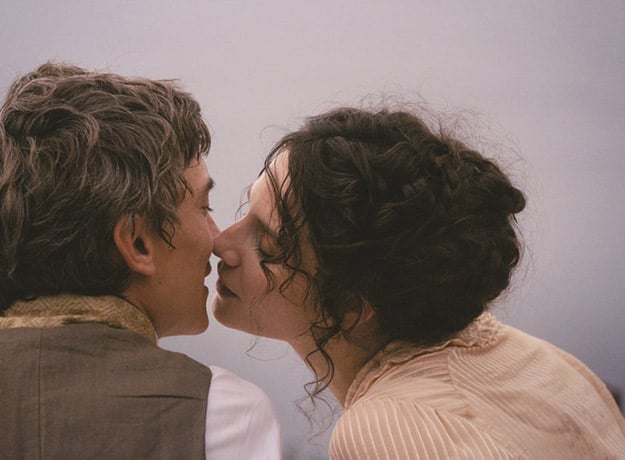
A 19th-century literary adaptation would seem a big jump from that, but A Woman’s Life and The Measure of a Man have one thing in common—money. As in so much French fiction of that century—Balzac’s novels above all—A Woman’s Life very much comes down to economy, and beneath the ostensibly stable surfaces of the privileged world it depicts, we can see its heroine’s finances trickle away over the period of the narrative. The life in question—the French title of both novel and film is simply Une Vie—is that of Jeanne (Judith Chemla), daughter of the Baron and Baroness Le Perthius des Vauds (Jean-Pierre Darroussin and Yolande Moreau). The film, shot by Antoine Héberlé in Academy ratio, begins with Jeanne as a young woman, helping her father tend the garden of the family chateau; throughout, the film keeps flashing back to that period as if to a golden prelapsarian dawn. It also intermittently flashes forward, away from the narrative line that spans some three decades of its heroine’s adulthood, to an intensely gloomy period, as an older, haggard Jeanne walks in a rainswept landscape, dressed in black.
In between, the film covers a swathe of Jeanne’s life, starting with her spell at home after leaving convent school. Her parents (and who better to play absolutely benign, tender elders than Darroussin and Moreau, whose faces radiate friendly compassion?) are the sort who, when it comes to Jeanne marrying, consider her feelings above all. They support her marrying a young nobleman she takes a liking to, the Vicomte Julien de Lamare (Swann Arlaud); he is less wealthy than Jeanne’s parents, so he will come and live in their family home. There’s no suggestion that Julien is a gold-digger, but he proves to be something worse: a skinflint who moans that she’s spending too much on heating the chateau in winter.
There’s worse to come: late one night, Jeanne climbs a staircase—in what has clearly become a cold, inhospitable pile—to ask her maid and childhood friend Rosalie (Nina Meurisse) for more firewood. Just a few shots later, Brizé has cut to the night outside and two figures in white nightclothes running frantically across the lawn. In a film that excels in narrative shorthand (Anne Klotz’s editing is superb, and very distinctive in its nervy, rhythms of Roegian fragmentation), this is enough to tell us that Jeanne has run in horror from something awful. It doesn’t take long for us to realize—the scene is followed by a solemn confessional—that Julien has been sleeping with Rosalie.
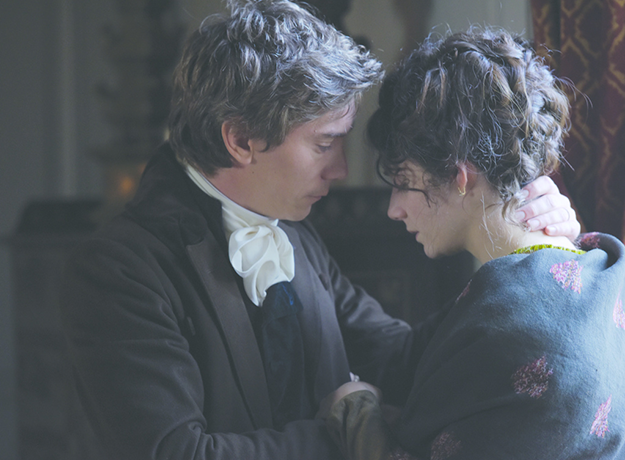
Later incidents in Jeanne’s life are similarly conveyed with understated but devastating concision: a single shot of two people in a garden tells us that Julien hasn’t mended his ways. Shortly after, a shocking turn of events involving three deaths is conveyed in a series of brief, telegraphically startling shots. Yet even after this catastrophe, the film doesn’t linger on the psychological and emotional effects for Jeanne; Brizé simply jumps ahead to the next major drama in her existence. Rather than A Life, the French title’s exact translation, this might have been called Events in a Life; our sense of getting comprehensive coverage of Jeanne’s biography is paradoxically enhanced by the fact that the film concentrates selectively on moments of crisis, rapture, or privileged reverie.
A Woman’s Life gives the lie to the assumption that a story is, or ought to be, about what a character does. Jeanne doesn’t actually do a great deal. Things happen to her, or just around her: the major events in her life often happen in her absence, and she experiences their repercussions. We first meet her son Paul (played as an adult by Finnegan Oldfield), when he is 12 and at boarding school; he goes on to lead a turbulent life, almost entirely off-screen, that comprises exile, an apparently ill-judged liaison, and chronic financial misfortune, which he lays at the feet of his uncomprehending mother. Jeanne’s tribulations—and, possibly, her eventual salvation—are caused by the actions of others. It’s not so much that she’s passive or helpless—lacking agency, as we say now—simply that the forces of the world act on her more than she is able to act in the world.
The film’s English title might imply the grim philosophy that it is the lamentable lot of a woman—at least, a 19th-century woman—to be done to, rather than to do. But other women in this story, including Rosalie and Madame de Fourville (Clotilde Hesme), Julien’s later inamorata, very decisively make their own choices in life. Even cosy matron Adelaide, the Baronne, turns out to have been more active than Jeanne had realized; after her mother’s death, she discovers a letter from one Ferdinand, who claims to be Adelaide’s true love, suggesting that her parents’ supposedly ideal marriage was not all it seemed. What all this suggests is the notion that a biography is not necessarily the narrative of a person’s actions, but can equally be the story of their responses to what happens around them, their certainties gradually stripped away as their understanding of the world changes. Jeanne’s life isn’t the epic of Jeanne’s deeds, more her Bildungsroman, an education in disillusionment. The title Une Vie suggests a story about how we all live—about life as the realization that we are not necessarily the active protagonists of our own sagas.
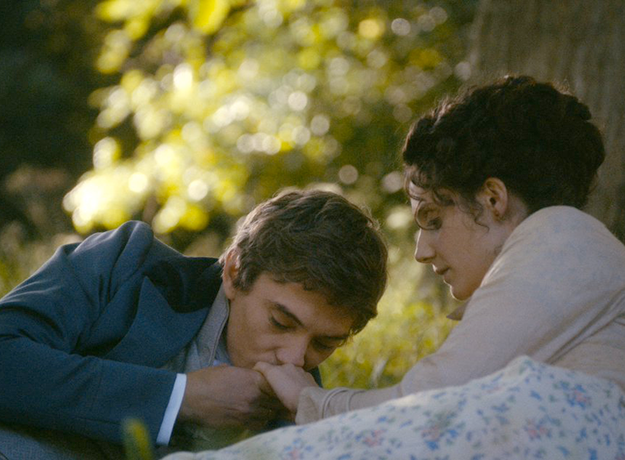
Like very few historical dramas, A Woman’s Life refuses to frame its drama as a tale of the past—to gauze it over with a prettifying effect of antiquity. It feels more like a fragmented docudrama about life in a specific 1800s milieu. Andrea Arnold’s Wuthering Heights attempted something similar, although that film went out of its way to foreground its revisionist modernity; the closest to Brizé’s no-frills approach is perhaps Marion Laine’s underrated Flaubert adaptation A Simple Heart (2008), although if the Dardennes ever made a costume drama, it might well be rather like this, visually at least. Brizé gets right one essential thing that so many historical dramas don’t: things look new rather than antique, because they were new at the time, like the crisp white paper on which Jeanne has made her drawings. It’s also significant that the delicate gowns in which she does her gardening get very muddy round the hem: these are not museum pieces but everyday items, worn and messed up in the now.
Most of all, A Woman’s Life catches a tone of everyday intimacy that very much chimes with the naturalist tenor of Maupassant’s world. The acting is low-key, relaxed, without the faintest whiff of drawing-room stiffness: even some of the most charged moments, such as the scene where the Baron puts Jeanne right about her financial misconceptions, are pitched very calmly, without too obtrusive a dramatic edge. There’s a wonderful scene, purely incidental and done in perfectly casual sotto voce, in which Jeanne and Julien muse over a logical riddle that the Baron playfully sets them.
Antoine Heberlé’s photography makes beautiful use both of candlelit night shots and daytime interiors that, I’m guessing, use natural light for a Vermeer-like effect. But the film is rarely painterly in an overtly artful sense: only the occasional shot, such as Jeanne and her father in black, against a rough sea, serves to remind us that we’re in the century of Romantic agony (Jeanne’s outdoor wanderings sometimes recall the solitary torments of Truffaut’s Adèle H.). Academy ratio, these days not much associated with period drama, enhances the sense of immediate realism and intimacy: the film privileges tight shots (like the long take of Jeanne’s wedding night, held on her head and shoulders) and telling cutaways (her and Julien’s hands close to each other, water dripping on a rain-damaged table). There’s a very unconventional approach to sound for a period drama: a rough, almost docu-style emphasis on obtrusive wind sounds; the harsh rhythmic cracking of logs on a fire punctuating a key scene; above all that downplayed, anti-declamatory use of the actors’ voices.
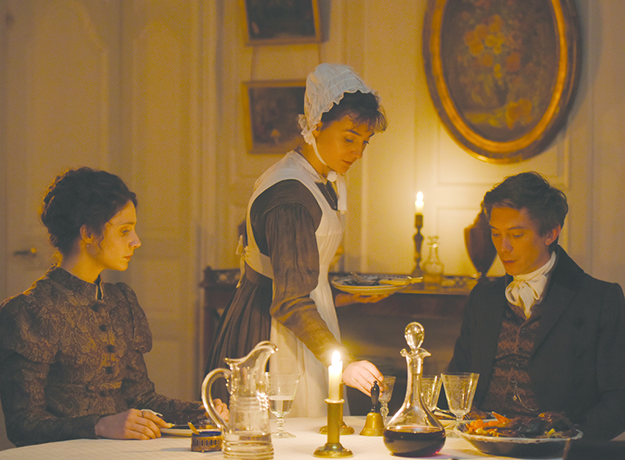
Judith Chemla provides the quiet but by no means still center to all this. Much of her performance is contemplative: she’s frequently shot gazing out of a window, onto sun or drizzle. Her Jeanne often reacts with horror, helplessness or desperation, at a world beyond her comprehension, or shows a quiet dogged strength in resisting the pressures on her; Chemla has the emotional repertoire of the sensitive, troubled 19th-century domestic heroine down to a tee. But she totally surprises us when the older Jeanne retreats into an embittered, partly deluded paranoia towards the one person who still cares for her. This delicately featured, somewhat reserved actress has been a well-kept secret till now (she was in French TV series Spiral and Téchiné’s In the Name of My Daughter), but she gives a quietly revelatory performance here, in a quietly revelatory film.
Jonathan Romney is a contributing editor to Film Comment and writes its Film of the Week column. He is a member of the London Film Critics Circle.



